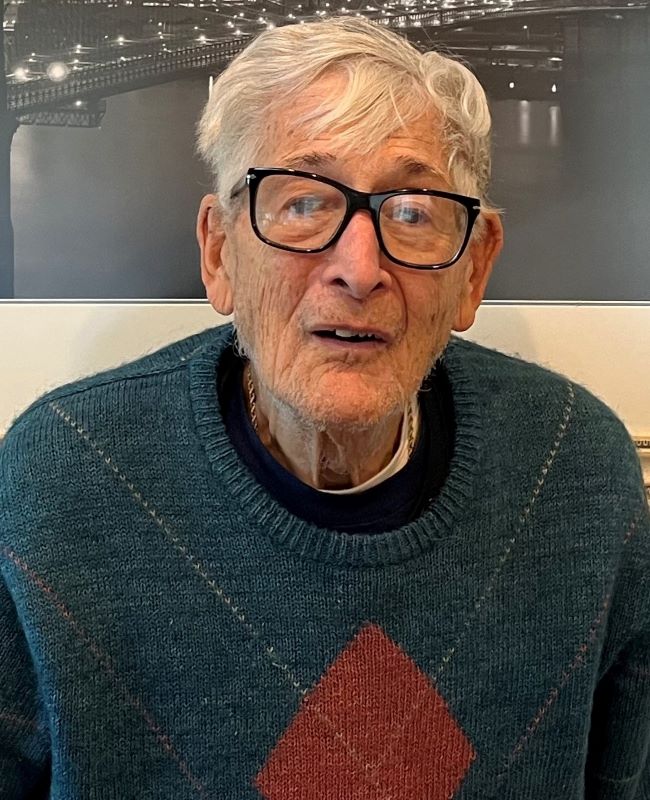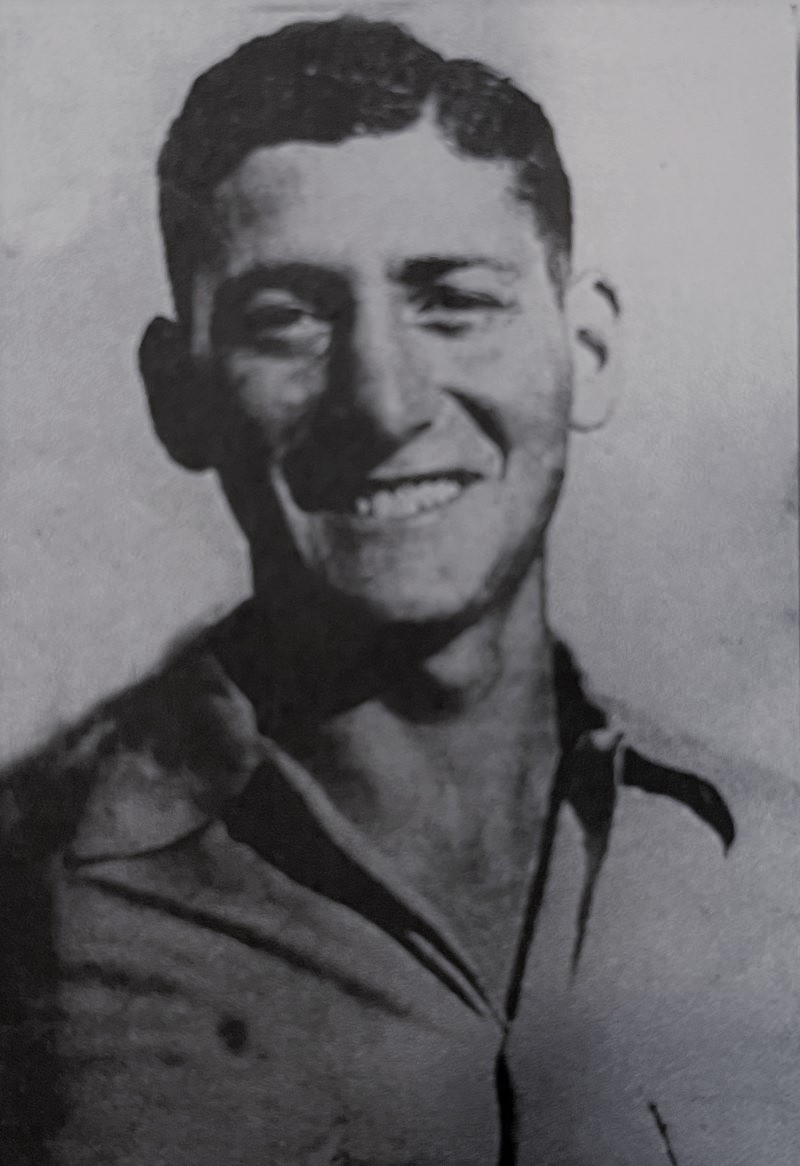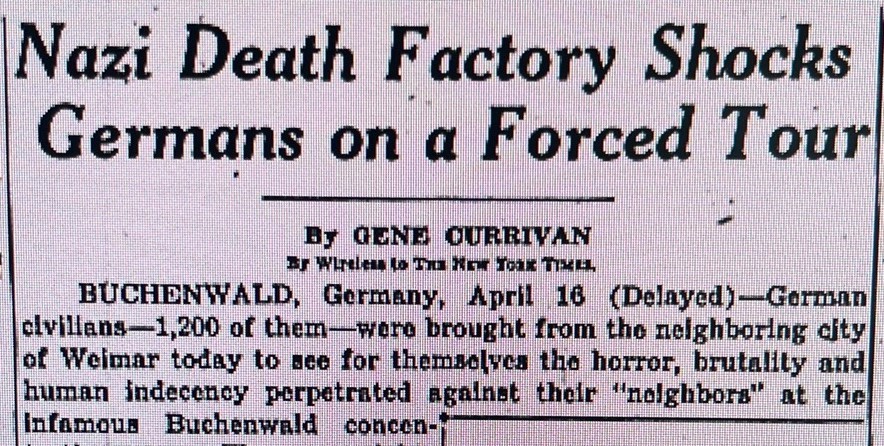The 80th Anniversary of the Discovery of the Nazi Concentration Camps
By Bruce Doorly

Today, a room at the Shimon and Sara Birnbaum Jewish Community Center in Bridgewater houses the Helen and Sol Krawitz Holocaust Memorial and Education Center.
Inside the center, there are two touchscreen terminals that offer extensive information about the Holocaust. Additionally, there are book sections designated for children and adults.
On the wall, a seven-foot circular 2-D mosaic, created by local artist Evelyn Rauch, serves as a symbolic memorial for all those who perished during the Holocaust, as well as for survivors who faced immense struggles to continue living.
This milestone anniversary is significant as it will probably serve as the last time that a handful of the soldiers (who are now around 100) can (re)tell their stories about the discovery of the camps. Likewise for the American people, as only those 90 and older can tell others what it was like to first see the gruesome photos from the death camps.
Throughout the war there were rumors that such unimaginable treatment was occurring. The American newspapers occasionally printed the stories about these rumors, but the articles which were amazingly buried on the inside pages seemed unbelievable.
During World War I, there were many stories about German atrocities that turned out to be false – just mere propaganda. So, the press was very careful.
The Russians, our ally in the war, had liberated two concentration camps in July of 1944 and January of 1945. News and photos of the camps were printed in the Russian newspapers, but the American press did not trust the Russians, so they chose not to report it.
The American troops had seen the horrors of war, but nothing could prepare them for the shock of the conditions of the concentration camps.
 |
 |
Archie said “the images will haunt me till the day I die.” Archie passed away in 2024.
The first reports that reached the American home front were radio reports in mid-April 1945. The most famous was a ten-minute report by Ed Murrow given on April 15th about what he saw at Buchenwald. Excerpts from his report:
“There were two rows of bodies stacked up like cordwood. They were thin and very white. Some of the bodies were terribly bruised; though there seemed to be little flesh to bruise. …. I arrived at the conclusion that all that was mortal of more than 500 men and boys lay there in two neat piles.”
He went on to tell about the evil-smelling stink that was beyond description. And that death had already marked the living.
He closed with “For most of it, I have no words.”
WARNING-disturbing-content

The New York Times, at last, printed an article on the front page that told of the conditions at Buchenwald and how the German civilians were forced to tour the camp to see for themselves the horror, brutality, and indecency that had been done by their fellow countrymen.
The newsreels that were shown before the movies were the first videos of the Holocaust that the American public saw.
On April 26th, 1945, Universal Newsreel showed footage of General Eisenhower, General Patton, and General Bradley touring the concentration camp at Ohrdruf.
They are disgusted as they view torture-gallows, heaps of charred human bodies and pits filled with corpses. Other newsreels would follow in the upcoming weeks, but this was the first.
WARNING-disturbing-content
The May 7th 1945 issue of Life Magazine showed thirteen shocking pictures of the dead and the skeleton like bodies of the living.
LIFE explained why they printed these photos - “Dead men will have indeed died in vain if live men refuse to look at them.”
photos on page 32-37
WARNING-disturbing-content
A soldier stopped us and said: “I think you better take a look at these box-cars.” The cars were filled with dead men. Most of them were naked. On their bony, emaciated backs and rumps were whip marks.
As for the living he said “The eyes of these men defy my powers of description. They are the eyes of men who have lived in a super-hell of horrors for many years.”
No article about the discovery of the Nazi concentration camps would be complete without mentioning the HBO mini-series “Band of Brothers.”
The American soldiers in their advancement toward Berlin come upon a concentration camp where the guards have just left. The prisoners, who are on the verge of death, are living skeletons walking around like zombies. This footage can be seen on YouTube. This 4-minute 23 seconds scene has been called by some the most moving and powerful piece of film ever.
Many, including this author, cannot watch it without getting emotional.
WARNING-disturbing-content